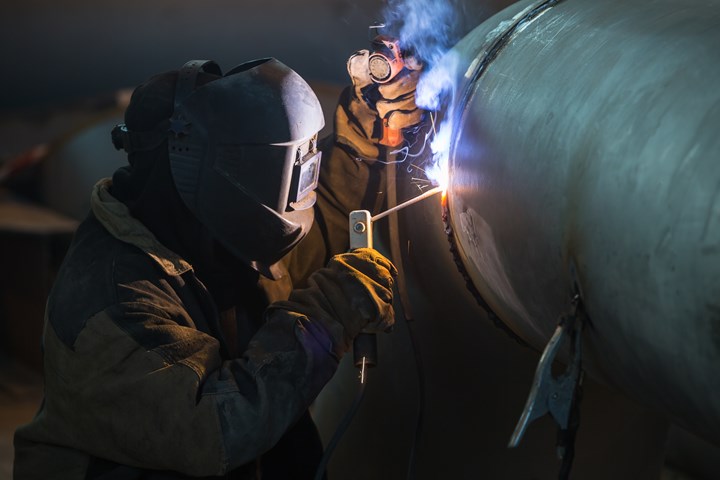Welding WPS: Typical Errors to Avoid and How to Correct Them
Welding WPS: Typical Errors to Avoid and How to Correct Them
Blog Article
Getting Welding Excellence: Introducing the Tricks of WPS Implementation and Optimization
In the realm of welding, achieving excellence is a search that rests on the careful implementation and optimization of Welding Treatment Specifications (WPS) These fundamental documents function as the backbone of welding procedures, dictating the treatments and criteria needed for creating premium welds continually. Nevertheless, the keys to unlocking the full potential of WPS exist not only in comprehending its importance however additionally in understanding the complexities of its application and optimization. By delving right into the crucial elements, methods, challenges, and finest practices connected with WPS, a world of welding quality awaits those who agree to explore its midsts.
Significance of WPS in Welding
The Relevance of Welding Treatment Requirements (WPS) in the welding sector can not be overstated, acting as the backbone for guaranteeing uniformity, top quality, and security in welding operations. A WPS gives thorough instructions on just how welding is to be accomplished, consisting of crucial variables such as products, welding processes, joint design, filler metals, preheat and interpass temperatures, welding currents, voltages, travel speeds, and more. By adhering to a well-defined WPS, welders can maintain uniformity in their work, leading to consistent weld high quality throughout different tasks.

Crucial Element of WPS
Discussing the essential elements of a welding procedure spec (WPS) is vital for recognizing its role in welding procedures. One important facet of a WPS is the welding procedure requirements, which lays out the details welding procedures to be utilized, such as gas tungsten arc welding (GTAW) or shielded metal arc welding (SMAW) By including these key elements right into the WPS, welding treatments can be standard, ensuring quality, efficiency, and safety and security in welding procedures.
Approaches for WPS Optimization

Second of all, training and qualification of welding employees according to the certain needs of the WPS is critical. Supplying detailed training programs and making certain that welders are certified to implement procedures described in the WPS can cause higher top quality welds and reduced rework.
Furthermore, leveraging technology such as welding software application and monitoring systems can assist in optimizing WPS. These tools can help in monitoring variables, ensuring specifications are within specified limitations, and supplying real-time responses to welders, allowing them to make instant modifications for improved weld quality.
Common Challenges and Solutions
Dealing with challenges in executing the methods for WPS optimization can hinder welding operations' effectiveness and high quality. One typical obstacle is poor training or understanding of the welding treatment specifications (WPS) among the welding group. This can lead to incorrect execution of welds, resulting in problems and rework. description To resolve this, detailed training programs must be carried out to make certain that all welders excel in applying and interpreting WPS accurately.
One more difficulty is the absence of appropriate documentation and record-keeping, which is vital for WPS optimization. Without clear records of welding parameters, materials utilized, and evaluation results, it comes to be challenging to recognize locations for renovation and ensure consistency in welding processes. Implementing a durable documentation system, such as digital welding monitoring software application, can help enhance record-keeping and promote information analysis for continuous renovation.
Furthermore, inconsistent welding equipment calibration and upkeep can position a substantial difficulty to WPS optimization. Regular equipment checks, calibration, and maintenance routines should be stuck to purely to ensure that welding specifications are accurately managed and kept within the defined tolerances (welding WPS). By resolving these usual difficulties with aggressive solutions, welding procedures can boost efficiency, high quality, and overall welding quality
Best Practices for WPS Application
To make certain successful WPS implementation in welding operations, adherence to sector standards and precise focus to detail are critical. When launching WPS implementation, it is critical to start by completely comprehending the certain welding needs of the job. This requires a detailed evaluation of the welding treatment specifications, materials to be welded, and the ecological conditions in which the welding will take place.
Once the requirements are clear, the following step is to choose the suitable welding treatment that aligns with these requirements. This involves speaking with the relevant codes and requirements, such as those given by the American Welding Culture (AWS) or the International Organization for Standardization (ISO), to make sure compliance and top quality.
In addition, recording the whole WPS application procedure is necessary for traceability and high quality control. Thorough records ought to be kept relating to welding criteria, material preparation, preheat and interpass temperatures, welding consumables made use of, and any kind of inconsistencies from the initial treatment. Normal audits and testimonials of the WPS can assist identify locations for improvement and make sure ongoing optimization of the welding procedure.


Conclusion
In conclusion, the application and optimization of Welding Procedure Requirements (WPS) is vital for achieving welding excellence. By recognizing the essential elements of WPS, carrying out effective approaches for optimization, dealing with usual see here challenges, and following finest techniques, welders can guarantee premium welds and safe working conditions. It is critical for experts in the welding sector to focus on the proper execution of WPS to enhance total welding performance and accomplish wanted end results.
The Importance of Welding Procedure Specifications (WPS) in the welding industry can not be overemphasized, serving as the foundation for making sure uniformity, high quality, and security in welding procedures. A WPS supplies comprehensive instructions on exactly how welding is to be lugged out, including essential variables such as products, welding processes, joint style, filler metals, preheat and interpass temperatures, welding currents, best site voltages, travel rates, and more. One critical facet of a WPS is the welding procedure specification, which describes the details welding procedures to be used, such as gas tungsten arc welding (GTAW) or shielded metal arc welding (SMAW) By integrating these crucial elements right into the WPS, welding treatments can be standardized, guaranteeing top quality, effectiveness, and safety and security in welding procedures.
It is important for professionals in the welding sector to prioritize the proper execution of WPS to improve general welding efficiency and attain desired results.
Report this page